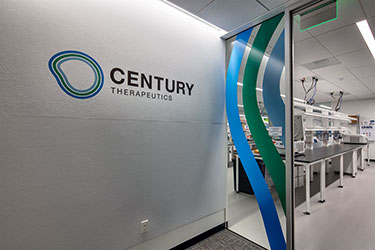|
Subscribe / Renew |
|
|
Contact Us |
|
| ► Subscribe to our Free Weekly Newsletter | |
| home | Welcome, sign in or click here to subscribe. | login |
Construction
| |
 |
May 11, 2023
Best practices for successful outcomes to complex health care projects
Project Planning Partners

Elsom
|
As economic headwinds continue to impact growth, even in historically robust markets like Seattle, investors and other real estate professionals are increasingly looking to high-performing asset classes to move confidently into the future.
One of those product types is health care and biotech. Recent studies show that demand remains extremely high for health care workers and brick-and-mortar facilities, with one source, the U.S. Bureau of Labor Statistics, citing that the “healthcare and social assistance sector is projected to add about 2.6 million jobs from 2021 to 2031,” the most of any U.S. job market sector. More locally, the Seattle Office of Economic Development says that one in five jobs here are directly associated with the health care industry, a number many believe will continue to rise.
Furthermore, in the Downtown Seattle Association’s 2022 Economic Report, research shows that the “sale of biotech properties has remained strong over the past few years,” with several buildings trading for record highs. In that same report, real estate research firm Newmark indicated that the Puget Sound region ranks third nationally for overall life science growth, and that related venture capital in the area increased by 200% over the past five years.
With so much attention being given to public health these days, and rightly so, it stands to reason that demand for health care, biotech, and life science industry workers — and the facilities which support their patient care and R&D — should be in significant demand. We can see that growth in South Lake Union and other neighborhoods where tower cranes loom over ground-up health care-related developments, as well as facilities additions and renovations. That trend won’t likely slow down anytime soon.
So, it’s incumbent upon commercial real estate professionals who, along with their clients, are responsible for these highly specialized and complex product types to do everything possible to deliver projects quickly and efficiently. That’s easier said than done, though, especially with recent escalations in costs impacting the entire development and construction industry.
The name of the game, particularly among owner’s reps in health care and life science, is to deliver value to our clients, no matter the size and scale of their projects. But working in an industry where many factors can greatly stress a project — including complex regulatory requirements, occupied critical spaces, challenging site conditions, and the ongoing need to deliver more with less — a set of best practices are crucial for success.
The most important “north star” goal for any project manager on a health care or life science development is to keep everyone on track and acutely informed of their responsibilities and timelines. That’s done by managing expectations, monitoring risk, and communicating with the client and development team.
Before examining these best practices, it’s important to note the owner’s rep job is more than just tracking. We engage with teams to ensure we’ve demonstrated proof of progress, understand where challenges may exist, identify potential hurdles to overcome, and provide alternative solutions to resolving the issue. Project management is by no means a passive role; it requires constant brainstorming sessions with team leaders to identify innovative solutions and persistent personal interaction with all project stakeholders.
As costs continue to rise and budgets tighten, one innovative tool owner’s reps use is a detailed matrix that weighs the value of each of the project’s key design components. This method of prioritizing ensures adherence to overall project goals while keeping our teams aligned with the client’s target budget. The matrix also helps project managers to control scope as we work to meet the client’s broader vision for the development’s impact on the industry and community at-large.
Along the way, guiding principles will be used to facilitate confident decision-making among all project stakeholders. We utilize a target value design approach to assign costs to each of the project’s programmatic spaces. And as design evolves, we prioritize any scope modifications by assigning “must-haves,” “want-to-haves,” and “nice-to-haves” to all project elements, enabling the team to compare cost to need, as well as to easily determine the most important investments. This process has consistently enabled our clients to maximize buildable space and prioritize what’s implemented within defined budget parameters, in the end helping to retain critical features to support the building’s operations and project goals.
Since construction isn’t the main focus of health care clients’ business and given the development industry’s own unique language, today’s best project managers provide value by ensuring all essential scope items are translated into design documents. This begins with a training session for key stakeholders defining the process to each level of engagement.
This was critical in our work on a major lab development in Seattle recently, where we provided a detailed definition of everything the client would need to know early during the design phase — from project expectations to how the scope develops over time to milestone decisions for company leadership. For Fred Hutchinson Cancer Center, we used life-sized cardboard mock-ups to help determine critical building-block requirements for repetitive exam room spaces in the clinical environment, an approach that helped the client to understand the implications of the final built solution and adjust appropriately while costs are not impacted.
To communicate effectively with clients and development team members, and to help manage project risk, experienced project managers utilize detailed activity logs as the primary tracking tool — especially for tasks and issue resolution, as well as to keep the construction schedule on time. Integrating key milestone activities into the activity log can often prove beneficial, as it did on a recent project with bluebird bio (now named 2seventy bio) — a leading immuno-oncology cell therapy company focused on discovering and developing new therapies that truly disrupt the cancer treatment landscape.
The company’s tight development timelines and intense equipment needs required significant coordination with the design and procurement challenges to relocate people, equipment, and other critical resources from an old facility to the new development without any interruption to ongoing science.
Aside from client correspondence, activity logs can also be instrumental in communicating with AHJs, or the “authorities having jurisdiction,” a term used for describing the municipal agency responsible for issuing permits or approving construction drawings. These processes are becoming especially critical and complex with the increasing regulatory oversight in the health care industry. The activity logs help to coordinate the various building permit approvals and licensing requirements for operating these specialty facilities.
In addition, there is a tremendous amount of cross-over coordination required between different AHJs, ranging from local building departments, counties issuing plumbing permits, and state departments of health providing construction review services for health care spaces. This collaborative effort ensures everyone receives proper documentation and coordinated requirements during reviews and final approvals, helping to align expectations and final installations that, in the end, facilitate streamlined operations.
Jody Elsom is owner and managing partner at Project Planning Partners, a Seattle-based real estate company providing project management, advisory services, and strategic planning to companies in the health care, life science and other industries.
Other Stories:
- Why Seattle has become a hotbed for life sciences
- New chapter for life sciences starts in the U District
- Tepid appetite for local lab space continues
- What does it take to convert offices to biotech lab space?
- ‘Supersized’ team finds success at Seattle Children’s Forest B
- Wellness nestles in the trees at The Evergreen State College
- Transforming the care model in the Rogue Valley
- The evolution of science: trends affecting the science workplace
- Considerations for successful adaptive reuse projects





